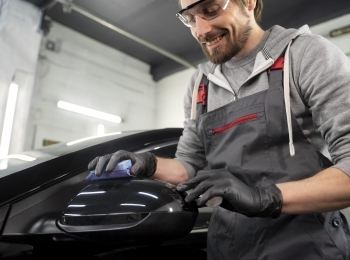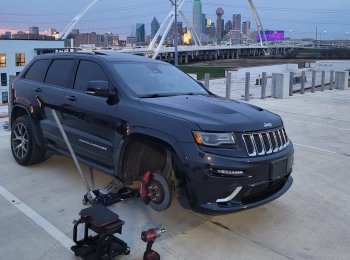A leaking intake manifold can quietly destroy your engine if left unchecked, often going unnoticed until major damage is already done. This article is your complete guide to understanding the most common intake manifold coolant leak symptoms, what causes them, and how to catch them early. One of the most overlooked signs of engine trouble is a coolant leak from the intake manifold often misdiagnosed or ignored until overheating, misfires, or engine failure begin.
In this article, you’ll learn about the 8 clear warning signs that can help you spot a leak early, prevent expensive repairs, and protect your engine’s health. Whether you’re a car owner dealing with strange smells or drops in coolant, or a DIY enthusiast trying to track down an overheating problem, this guide is written to help you make smart, informed decisions in plain language anyone can understand.
What Is the Intake Manifold and Why Does Coolant Flow Through It?
The intake manifold is the part of your engine that delivers air (and in some cases fuel) into the combustion chambers. But in many modern engines, coolant also flows through the manifold to help manage the engine’s temperature.
Here’s why that matters:
- Coolant in the manifold helps regulate engine heat.
- A leak in the manifold gasket or housing allows coolant to escape or mix with oil or air.
- Left unchecked, this can lead to overheating, poor engine performance, and even internal engine damage.
Understanding how it works sets the stage for recognizing when it isn’t working properly.
1. Coolant Loss With No Visible Leak
One of the first red flags is a gradual drop in coolant levels but no puddle under your car. This often happens when coolant is leaking internally into the intake manifold or the engine’s combustion chamber.
What to look for:
- You keep topping off your radiator or overflow tank.
- No leaks are visible on the ground.
- No sign of steam or external drips.
This slow loss might seem minor, but it’s a common symptom of a leaking intake manifold gasket allowing coolant to escape into the engine, where it’s burned off as steam or ends up in your oil.
2. White Smoke Coming From the Exhaust
If your coolant is entering the combustion chamber, you’ll often see white smoke coming from your tailpipe. It looks like steam and may have a slightly sweet smell.
What causes it:
- Coolant leaking into engine cylinders burns off with fuel.
- It creates thick, white smoke that may linger more than usual.
This is a telltale sign of a serious leak: never ignore white exhaust smoke, especially if it continues after the engine warms up.
3. Engine Overheating
Overheating is a classic symptom of a coolant issue and a potential sign that your intake manifold is leaking coolant. When your engine isn’t getting enough coolant or has air trapped in the system from a leak, it can’t stay cool.
Warning signs include:
- Temperature gauge rising above normal.
- Engine light or overheating warning turning on.
- Engine shutting down or running rough after heating up.
If your engine runs hot without any obvious radiator leak, check the intake manifold and gaskets next.
4. Milky Oil or Oil With a Frothy Texture
If coolant is leaking into the oil passages through a cracked or leaking intake manifold gasket, it will contaminate your oil. The result? Milky, light brown or tan-colored oil with a frothy texture.
What this means:
- You may see this on the dipstick or under the oil cap.
- It indicates coolant mixing with oil a dangerous condition that can ruin your engine.
This symptom requires immediate attention and a full oil flush after the problem is fixed.
5. Engine Misfires or Rough Idling
Coolant entering the combustion chamber or intake runners can cause engine misfires, especially when the engine is cold. You may also notice the car idling rough, shaking, or stumbling when accelerating.
Watch for:
- Check engine light with misfire codes (P0300, P0301–P0308).
- Hesitation or uneven engine power.
- Occasional sputtering or vibration.
These issues usually go hand in hand with coolant leaks in the intake ports or around the gasket area, disrupting air-fuel balance.
6. Visible Coolant Around the Intake Manifold
Sometimes the problem is visible. Coolant may leak out from the edges of the intake manifold, especially near where the manifold connects to the engine block.
Check under the hood for:
- Wet spots near the intake manifold.
- Crusty white or green residue near joints.
- Smell of sweet antifreeze when the engine is hot.
This is more common with plastic intake manifolds or when gaskets become brittle over time.
7. Sweet Smell Inside or Around the Vehicle
Coolant has a distinctive sweet smell that you’ll start to notice more frequently if it’s leaking. Even if you don’t see steam or drips, a persistent smell around the engine or inside the cabin (through the HVAC vents) can be a big clue.
Possible sources:
- Coolant leaking near the firewall or upper engine.
- Vapor being drawn into the intake or cabin ventilation system.
- Manifold leak evaporating slowly and releasing fumes.
Don’t ignore these smells; they’re often the first sensory signal of a leak starting to form.
8. Poor Fuel Economy and Weak Performance
A leaking intake manifold can cause unbalanced air-to-fuel ratios, poor compression, and engine drag due to overheating. All of this leads to lower gas mileage and sluggish performance.
Signs of performance loss:
- You notice more trips to the gas station.
- Acceleration feels sluggish or delayed.
- The engine feels like it’s “dragging” or running heavy.
These symptoms worsen over time and are often paired with one or more of the above signs.
What Causes Intake Manifold Coolant Leaks?
Understanding the causes can help you prevent leaks in the future. Here are the most common culprits:
- Worn or aged gaskets: Over time, rubber gaskets become brittle and fail under pressure or heat.
- Plastic manifold failure: Many newer engines use plastic intake manifolds, which can crack under thermal stress.
- Improper installation: Poor sealing during repairs can cause slow leaks.
- Engine overheating: Prior overheating incidents can warp or crack the intake manifold.
- Coolant corrosion: Lack of proper maintenance leads to coolant breakdown and damage to gasket surfaces.
What Happens If You Ignore the Symptoms?
An intake manifold coolant leak may start as a minor nuisance, but it can turn into catastrophic engine failure if not addressed. Here’s what could happen:
- Blown head gasket
- Cracked engine block
- Hydro-locked engine from coolant in cylinders
- Total engine replacement costs
The longer you wait, the higher the risk and the cost. Catching it early gives you a chance to fix it with a simple gasket replacement or minor repair.
How to Diagnose the Leak (Even at Home)
Here are some simple steps you can take before visiting a mechanic:
- Check for coolant loss weekly.
- Look for white smoke during cold starts.
- Inspect oil condition on the dipstick.
- Use a UV dye coolant tester to spot external leaks.
- Watch for engine misfire codes using a basic OBD2 scanner.
- Pressure test the cooling system to spot drops in pressure.
Even if you’re not a mechanic, spotting these signs early can give you a head start before serious damage occurs.
Can You Drive With a Leaking Intake Manifold?
Technically, yes but you absolutely shouldn’t. Even small leaks:
- Will get worse with time and heat cycling.
- Can cause rapid overheating on long drives.
- Risk coolant contamination in the oil, damaging bearings and engine parts.
If you must drive briefly, keep coolant topped up, avoid hard acceleration, and get to a shop as soon as possible.
Estimated Repair Cost for Intake Manifold Coolant Leaks
Here’s a rough breakdown of what you can expect to pay:
| Repair Type | Estimated Cost |
| Intake Manifold Gasket Only | $250–$600 |
| Full Intake Manifold Replacement | $500–$1,200 |
| Diagnostic Labor | $80–$150 |
| Additional Cooling System Parts | $100–$300 |
These costs can vary based on vehicle make, model, labor rates, and damage severity. Catching it early can save you hundreds or even thousands.
When to See a Mechanic
If you notice two or more symptoms from this list, especially white smoke, overheating, or oil contamination, it’s time to stop driving and see a professional. A mechanic will typically:
- Pressure test the system
- Inspect gaskets and manifold surfaces
- Use dye or borescope to check for leaks
- Recommend gasket replacement or part swap
Conclusion: Don’t Wait Until It’s Too Late
The signs of an intake manifold coolant leak are often subtle but ignoring them can be a costly mistake. From overheating to engine failure, what starts as a minor leak can snowball fast. By watching for symptoms like coolant loss, white smoke, engine misfires, or milky oil, you give yourself a huge advantage in catching the issue early.
Addressing the problem promptly keeps your engine running strong, prevents roadside breakdowns, and helps you avoid massive repair bills down the road. If you suspect a problem, don’t wait to check your vehicle, confirm the symptoms, and get professional help before it becomes an engine-ending issue.
FAQs
What are the symptoms of a coolant leak in the intake manifold?
Common signs include coolant loss, overheating, white smoke, milky oil, rough idling, misfires, and sweet smells from the engine.
Why does coolant leak from the intake manifold gasket?
Coolant leaks happen due to worn gaskets, cracked plastic manifolds, or poor installation, letting coolant escape or mix with oil or air.
How can I tell if my intake manifold is leaking coolant?
You might see low coolant, white smoke, engine heat, milky oil, rough idle, or a sweet smell. Check for crusty spots near the manifold too.
Where does coolant go when the intake manifold leaks?
It may leak into engine cylinders and burn off as smoke, or mix with oil in the crankcase, leading to contamination and engine damage.
What causes intake manifold leaks in modern engines?
Most leaks come from brittle gaskets, cracked plastic parts, overheating, or poor sealing during previous repairs.
How does a leaking intake manifold affect engine performance?
It disrupts air-fuel balance, causes misfires, overheating, and poor fuel economy. The engine may run rough or feel sluggish.
Why is my engine overheating with no visible coolant leak?
A hidden intake manifold leak can let coolant escape inside the engine, causing overheating without visible drips under the car.
What happens if I ignore an intake manifold coolant leak?
Ignoring it can lead to blown gaskets, warped parts, coolant in oil, or even full engine failure. Catching it early avoids big repair bills.












Leave a Reply